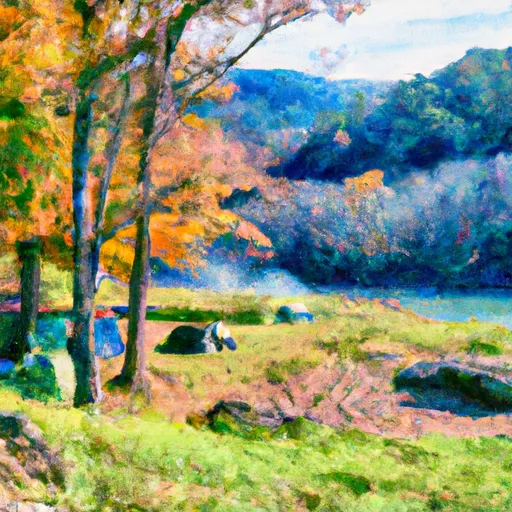Summary
The river is particularly well-known for its brown and rainbow trout, making it one of the most popular fly fishing spots in the state.
Other species of fish that can be found in the Tellico River include smallmouth and largemouth bass, as well as bluegill and sunfish.
Aside from fishing, there are plenty of other activities to enjoy in the area, including hiking, camping, and exploring the nearby Cherokee National Forest.
When it comes to fishing tips, anglers should focus on using small, natural-looking flies and lures to catch trout. It's also important to be patient and stealthy when approaching potential fishing spots, as the Tellico River can be quite clear and the fish can be easily spooked.
The best time of year to visit Tellico River for fishing is in the spring and fall, when the temperatures are mild and the fish are most active. The average temperature in the spring (March to May) is around 60°F, while the fall (September to November) averages around 70°F. It's important to note that the Tellico River is closed to fishing during the winter months (December to February) to allow for trout spawning.
Weather Forecast
Nearby Streamflow Levels
 Tellico River At Tellico Plains
Tellico River At Tellico Plains
|
98cfs |
 Cheoah River Nr Bearpen Gap Nr Tapoco
Cheoah River Nr Bearpen Gap Nr Tapoco
|
113cfs |
 Valley River At Tomotla
Valley River At Tomotla
|
108cfs |
 Ocoee River At Copperhill
Ocoee River At Copperhill
|
259cfs |
 Oostanaula Creek Near Sanford
Oostanaula Creek Near Sanford
|
30cfs |
 Hiwassee River At Charleston
Hiwassee River At Charleston
|
10400cfs |
Angling Safety Guidelines
Check local fishing rules, seasons, size limits, and license requirements to ensure legal and sustainable angling.
Handle Fish Responsibly
Use wet hands, minimize air exposure, and release fish gently to improve survival rates when practicing catch-and-release.
Choose the Right Gear
Match your rod, line, and tackle to the species and conditions to increase success and reduce unnecessary harm to fish.
Respect the Waterway
Avoid disturbing habitat, prevent bank erosion, and keep a safe distance from spawning areas to protect ecosystems.
Keep It Clean
Pack out all line, hooks, bait containers, and trash—discarded gear can injure wildlife and degrade waterways.
Related Links
Area Campgrounds
| Location | Reservations | Toilets |
|---|---|---|
 McNabb Group Camp
McNabb Group Camp
|
||
 Holly Flats Campground
Holly Flats Campground
|
||
 Holly Flats
Holly Flats
|
||
 North River Composite
North River Composite
|
||
 Dam Creek
Dam Creek
|
||
 Dam Creek Walk-In Campground and Picnic Area
Dam Creek Walk-In Campground and Picnic Area
|

 Indian Boundary Lake
Indian Boundary Lake
 Citico Creek
Citico Creek
 Tellico
Tellico